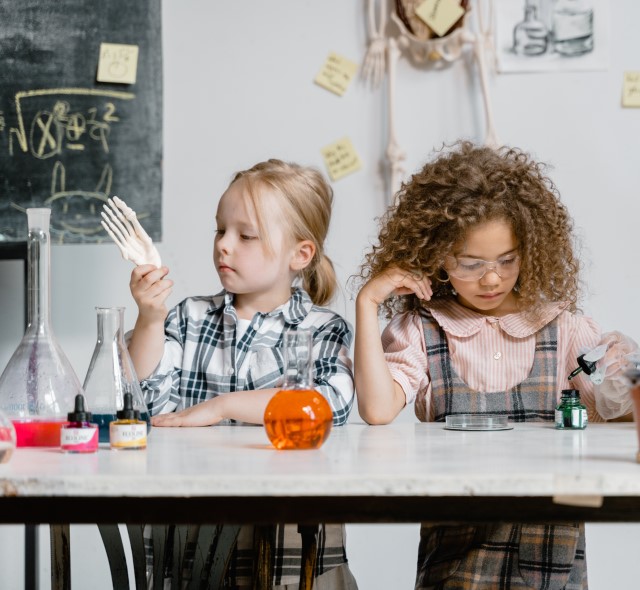- UNIFORM BY SCHOOL
- Girls School Uniform
- Boys School Uniform
- Skirts
- Boys Trousers
- Girls Trousers
- Polo Shirts
- Blouses
- Shirts
- Blazers
- PE Kit
- Clearance


Girls School Uniform


Boys School Uniform


FREE delivery - Ends Monday at Midnight
(X)







STEM-based education teaches children more than science and mathematics. It focuses on hands-on learning to help develop a variety of skills including creativity, technology literacy and social and communication skills. It also helps children develop critical thinking, decision making and acceptance of failure.
You can get your kids involved with loads of cool experiments at home – here’s just a few to get their inquisitive minds going.
Homemade slime
Making homemade slime is easy and fun. Once you’ve mastered the basic technique, there’s no limit to the ideas you can come up with together. This recipe from BBC Good Food is made from ingredients you can find around the house.
You can make plain colours in either pastel or bright tones, add glitter for a sparkle effect, or mix colours for unicorn, rainbow or other multi-tone variations.
Ingredients:
Method:
Make a sundial
Making a homemade sundial is really easy. You just need a dowel or a good stick, a paper plate, and a marker. Mark the position of the dowel's shadow every hour and the next day, see if your sundial tells accurate time while playing outside (providing it’s sunny!).
Self-inflating balloon
A twist on a vinegar-and-baking-soda experiment. If you put baking soda in an empty bottle and vinegar in a balloon, when you attach the balloon over the mouth of the bottle and let the vinegar pour in, the resulting gas will be enough to inflate the balloon on its own. It’s also a little less messy than creating a volcano!
Fizzy lava lamp
This recipe from CBeebies’ The Let's Go Club! It will show children the different properties of liquids and how they interact with each other.
Equipment:
Instructions
You can also try this with different colours and in different types of containers. Just make sure to put the lid on so that the liquid doesn't spill out.
Chromatography
Chromatography is a technique used to separate mixtures. Chromatography can separate colours in order to see what colours make up that specific colour just by using marker pens, water and filter paper. The different colour ink particles travel at different speeds through the filter paper allowing you to see the constituent colours of the pen ink.
What you need:
Method:
These activities are perfect to do at the weekend while school uniform is safely in the washing machine. Some can get a little messy so make sure you put plenty of newspaper down and get the kids to wear an apron!

